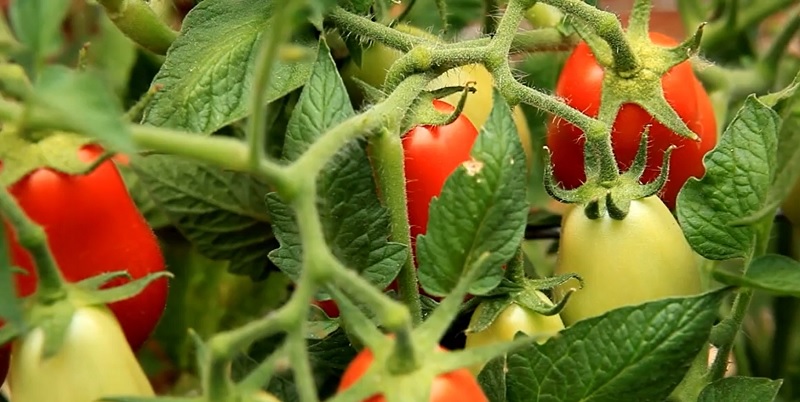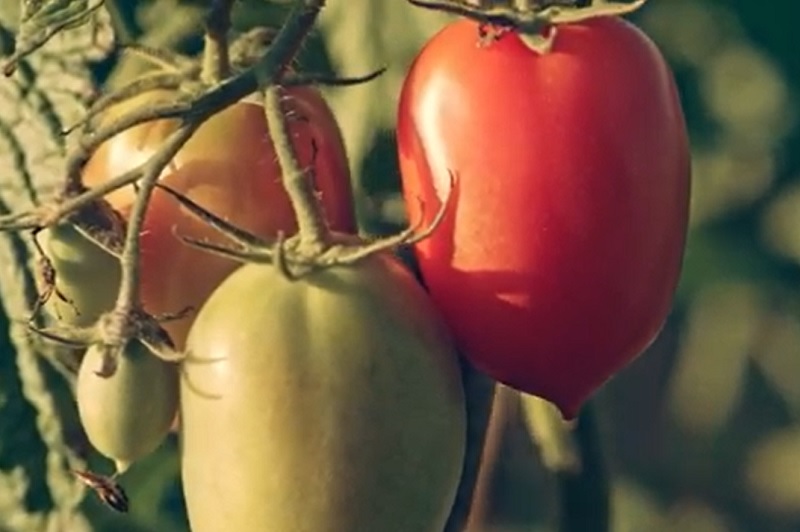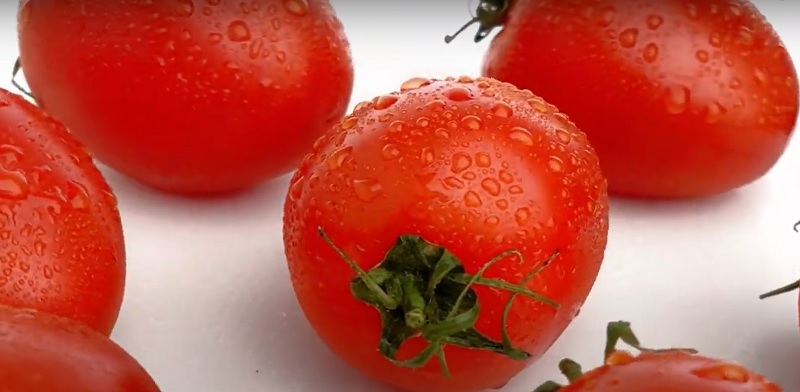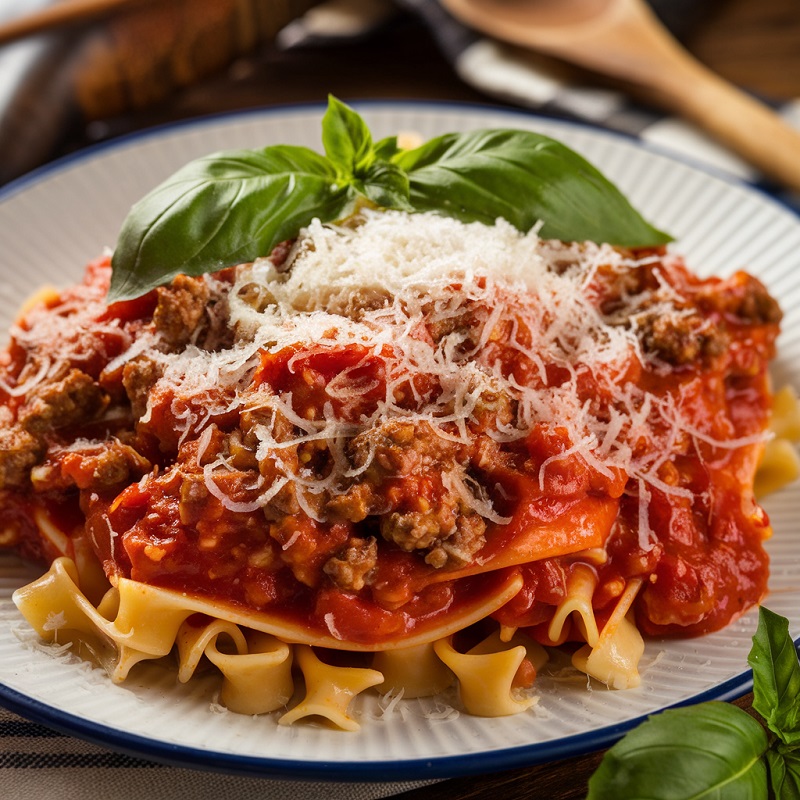What is Roma Tomato?
Roma tomato are a popular variety known for their unique shape and flavor. These tomatoes are often used for sauces and canning due to their low moisture content and fewer seeds. They typically have a bright red color and a firm texture, making them ideal for cooking and preserving. Roma tomato, is a popular variety of plum tomato widely used in various cuisines around the world, especially for making sauces, pastes, and canning due to its dense flesh and low moisture content. Here’s more about its geography, history, and cultural significance:
Geography
Roma tomatoes are grown all over the world, but they do best in warm and sunny places. They love the sun! Countries like Italy, Mexico, and parts of the U.S. (like California and Florida) grow a lot of these tomatoes because their weather is perfect for them. The climate helps them get that rich flavor we love in sauces and salsas.
History
Even though they’re called Roma tomatoes, they didn’t originally come from Rome! Funny, right? They were actually developed in the United States in 1955. Scientists wanted to make a tomato that was strong and didn’t get diseases easily, so they created this one. Tomatoes themselves originally came from South America, and when Spanish explorers brought them to Europe, they became a big deal, especially in Italy. That’s why we often connect tomatoes with Italian food today.
Cultural Significance
In Italian cooking, Roma tomatoes are super important. You can find them in almost every pasta sauce, on pizzas, and even in soups. Because they’re not too watery, they’re perfect for making rich and thick sauces. In Mexico, they’re used for making salsa and other spicy dishes. People love them because they have a sweet taste and firm texture. Whether it’s a fancy restaurant or homemade dinner, Roma tomatoes are a key ingredient in many kitchens around the world!
Characteristics of Roma Tomato
- Shape: Plum or egg-shaped
- Color: Bright red
- Size: Medium-sized, usually around 2-3 inches long
- Texture: Firm and meaty, with fewer seeds than other varieties
Nutritional Benefits of Roma Tomatoes
Roma tomatoes are not just tasty; they are also packed with nutrients. Here are some key benefits:
- Low in calories: Only about 35 calories per medium tomato
- Rich in vitamins: High in vitamin C and vitamin A
- Antioxidants: Contains lycopene, which is beneficial for heart health
Common Varieties of Roma Tomatoes
There are several varieties of Roma tomatoes, each with its own unique traits. Some popular ones include:
- Roma VF: Known for its resistance to common tomato diseases.
- San Marzano: A prized variety for its sweet flavor, often used in Italian cooking.
- Viva Italia: A hybrid variety that produces high yields and is disease-resistant.
Roma tomatoes are a versatile choice for gardeners and cooks alike, offering both flavor and nutrition.
Selecting the Right Seeds
Choosing the right seeds is crucial for a successful tomato garden. Understanding the differences between heirloom and hybrid seeds can help gardeners make informed choices.
Heirloom vs. Hybrid Seeds
- Heirloom Seeds: These seeds are open-pollinated and can be saved for future planting. They often have unique flavors and characteristics.
- Hybrid Seeds: These are bred for specific traits, such as disease resistance or higher yields. However, seeds from hybrid plants may not produce the same quality in the next generation.
- Considerations: Think about your gardening goals. If you want to save seeds, heirlooms are the way to go. If you’re looking for consistent results, hybrids might be better.
Where to Buy Quality Seeds
Finding quality seeds is essential. Here are some reliable sources:
- Local nurseries
- Online seed companies
- Farmer’s markets
Seed Storage Tips
Proper storage can extend the life of your seeds:
- Keep seeds in a cool, dry place.
- Use airtight containers to prevent moisture.
- Label your seeds with the date and variety for easy reference.
Remember, knowing what you want from your plants can help you choose a variety that best fits your wants and needs.
By selecting the right seeds, gardeners can set the stage for a bountiful harvest of delicious Roma tomatoes!
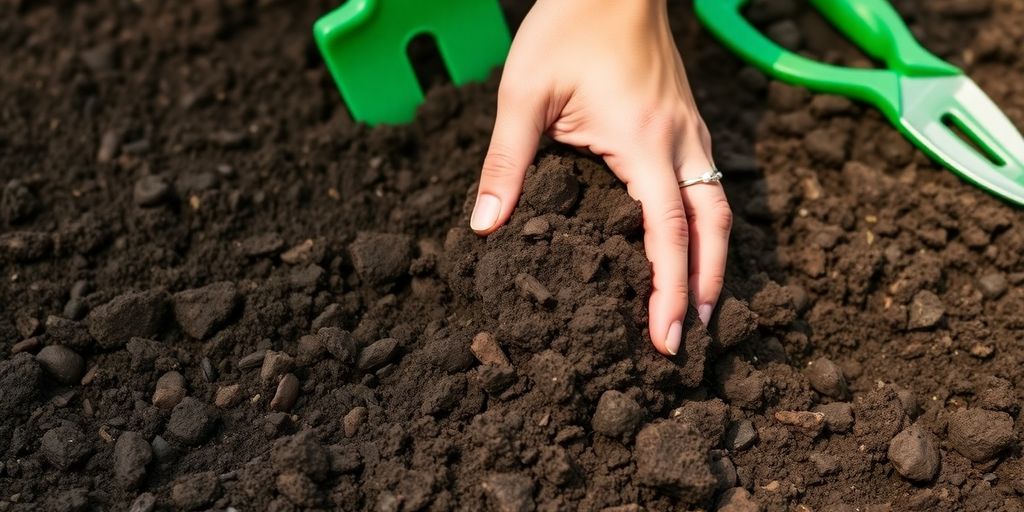
Preparing the Soil
When it comes to growing Roma tomatoes, preparing the soil is crucial. Tomatoes thrive in deep, rich, and well-drained soil. Here are some key steps to ensure your soil is ready:
Soil pH Requirements
- Test your soil to find out its pH level. Tomatoes prefer a slightly acidic pH between 6.0 and 6.8.
- If your soil is too alkaline, you can lower the pH by adding sulfur. Conversely, if it’s too acidic, lime can help raise it.
Essential Nutrients for Roma Tomatoes
- Incorporate organic matter like compost or well-rotted manure to improve soil fertility.
- Consider adding soil amendments such as bone meal for phosphorus, blood meal for nitrogen, and wood ash for potassium.
Improving Soil Drainage
- Ensure your planting area has well-draining soil to prevent root rot. If your soil is heavy clay, consider:
- Creating raised beds.
- Mixing in organic matter or sand to enhance drainage.
- Regularly turning the soil to aerate it.
Proper soil preparation not only helps in growing healthy plants but also leads to a bountiful harvest.
By following these steps, gardeners can create an ideal environment for their Roma tomatoes to flourish. Remember, healthy soil leads to healthy plants!
Planting Roma Tomato
When to Plant Roma Tomatoes
Roma tomatoes should be planted outdoors only after the last frost has passed, typically in late May or early June. This timing ensures that the plants have the best chance to thrive without the risk of frost damage.
Spacing and Depth Guidelines
When planting, it’s important to give each plant enough space to grow. Here are some guidelines:
- Spacing: Space the plants about 18-24 inches apart to allow for good air circulation.
- Depth: Plant the seedlings deep, leaving just a few inches above ground. This encourages strong root growth.
Transplanting Seedlings
If starting from seeds, transplant the seedlings into larger pots once they have filled their initial containers. This helps them develop a robust root system. Healthy seedlings are key to a successful harvest.
Gardening Tip: When planting, bury the seedlings deeper than they were in the pot, up to the first set of true leaves. This promotes a stronger root system, leading to healthier plants.
By following these steps, gardeners can set the stage for a bountiful harvest of Roma tomatoes. Proper planting techniques are essential for ensuring that the plants grow strong and produce plenty of fruit.
Watering and Irrigation
Tomatoes thrive on consistent moisture, making regular watering essential for a successful harvest. Here’s how to ensure your Roma tomatoes get the right amount of water:
Optimal Watering Schedule
- Water Deeply: Aim to keep the soil moist but not soggy. Watering in the morning is best, allowing the leaves to dry before nightfall.
- Frequency: Water your plants about 1-2 times a week, depending on rainfall and temperature.
- Check Soil Moisture: Stick your finger into the soil; if it feels dry an inch down, it’s time to water.
Drip Irrigation Systems
Using a drip irrigation system can be a game changer. It delivers water directly to the roots, minimizing evaporation and ensuring that the plants receive a steady supply of moisture. Here are some benefits:
- Efficiency: Reduces water waste.
- Consistency: Provides a steady moisture level.
- Disease Prevention: Keeps foliage dry, reducing the risk of fungal diseases.
Mulching to Retain Moisture
Applying mulch around your tomato plants can help retain moisture in the soil. Here’s how to do it:
- Choose Your Mulch: Organic options like straw or wood chips work well.
- Apply a Layer: Spread a 2-3 inch layer around the base of the plants, keeping it away from the stems.
- Benefits: Reduces weeds, keeps soil temperature stable, and maintains moisture.
Proper watering is crucial for healthy tomatoes. Inadequate watering can lead to issues like blossom end rot and cracked fruits.
By following these tips, gardeners can ensure their Roma tomatoes receive the right amount of water, leading to a bountiful harvest!
Fertilizing Roma Tomatoes
Choosing the Right Fertilizer
When it comes to fertilizing Roma tomatoes, selecting the right type of fertilizer is crucial. A balanced, slow-release fertilizer is often recommended. Here are some options:
- Tomato-specific fertilizers (like Tomato-tone)
- Organic fertilizers (such as fish emulsion or seaweed)
- Granular formulas (like 4-7-10 or 3-4-6)
Organic vs. Synthetic Fertilizers
Both organic and synthetic fertilizers can be effective, but they have different impacts:
- Organic fertilizers improve soil health and are environmentally friendly.
- Synthetic fertilizers provide quick nutrients but can lead to soil depletion over time.
Fertilizing Schedule and Techniques
To ensure healthy growth, Roma tomatoes should be fertilized at specific times:
- Before transplanting: Mix compost into the soil.
- At planting: Add bonemeal to the planting hole.
- Every 3-4 weeks: Side-dress with liquid seaweed or fish emulsion once the tomatoes are about an inch in diameter.
Regular fertilization can significantly enhance the quantity and quality of your harvest.
In summary, tomatoes would benefit from being fertilized just before transplanting, at planting, before flowering, and when the fruits are small. This approach helps in achieving a bountiful harvest!
Pest and Disease Management
Managing pests and diseases is essential for a successful Roma tomato harvest. Tomatoes are prone to various pests and diseases, so early detection and action can save your plants from serious harm.
Identifying Common Pests
Here are some common pests that might invade your tomato plants:
- Aphids: Small, soft-bodied insects that suck sap from leaves.
- Spider Mites: Tiny pests that create fine webs on leaves.
- Tomato Hornworms: Large caterpillars that can quickly defoliate plants.
Preventing Tomato Diseases
To keep your tomatoes healthy, consider these prevention tips:
- Sanitation: Clean up plant debris regularly to avoid disease buildup.
- Crop Rotation: Change planting locations each year to reduce soil-borne diseases.
- Resistant Varieties: Choose tomato types that resist common diseases in your area.
Organic Pest Control Methods
For those who prefer natural solutions, here are some effective methods:
- Use neem oil or insecticidal soaps to deter pests.
- Introduce beneficial insects like ladybugs to control aphids.
- Handpick larger pests like hornworms and drop them into soapy water.
By staying vigilant and proactive, gardeners can protect their tomato plants and ensure a healthy growing season. Regular monitoring is key to keeping plants free from harmful pests and diseases.
Chemical Control Options
If pests become overwhelming, chemical options are available. Always follow the manufacturer’s instructions to avoid harming beneficial insects. For example, applying a tomato fungicide at the first sign of infection can be crucial.
| Pest/Disease | Control Method |
|---|---|
| Aphids | Insecticidal soap or water spray |
| Spider Mites | Neem oil or predatory mites |
| Tomato Hornworms | Handpicking or Bacillus thuringiensis (Bt) |
| Blight | Crop rotation and sanitation |
Pruning and Staking
Tomato plants can get heavy and messy without the right support. Pruning and staking are essential for keeping them healthy and productive. These methods help manage growth and improve fruit production, ensuring that the plants focus their energy on producing delicious tomatoes instead of sprawling out of control.
Benefits of Pruning
- Improves Airflow: Pruning allows better air circulation, which helps prevent diseases.
- Directs Energy: By removing suckers (the small shoots between the main stem and branches), the plant can focus on growing fruit.
- Easier Harvesting: Well-pruned plants are easier to pick from, making the harvest process smoother.
How to Stake Roma Tomatoes
- Choose Your Support: Use stakes, cages, or trellises to keep the plants upright.
- Secure the Plants: Tie the plants gently to the support to avoid damage.
- Monitor Growth: As the plants grow, adjust the ties to ensure they remain supported.
| Support Type | Pros | Cons |
|---|---|---|
| Stakes | Simple and cheap | May need frequent adjustments |
| Cages | Good for indeterminate varieties | Can be bulky |
| Trellises | Great for space-saving | Requires more setup |
Master Gardener Tip: Regularly check your plants for suckers and remove them to promote better growth and fruit quality.
By implementing these pruning and staking techniques, gardeners can enjoy a more fruitful and manageable tomato-growing experience. Healthy plants lead to a bountiful harvest!
Harvesting Roma Tomatoes
Signs of Ripeness
When it comes to harvesting roma tomatoes, knowing when they are ripe is key. Look for these signs:
- Color: The tomatoes should be a deep red color.
- Firmness: They should feel slightly soft when gently squeezed.
- Size: Roma tomatoes are typically smaller and more oval than other varieties.
Proper Harvesting Techniques
To ensure the best quality, follow these steps:
- Gently twist the tomato to detach it from the vine.
- If needed, use sharp pruning shears to cut the stem cleanly.
- Avoid pulling too hard to prevent damage to the plant.
Post-Harvest Handling and Storage
After harvesting, proper handling is crucial:
- Store ripe tomatoes at room temperature for the best flavor.
- Use them within a few days for optimal taste.
- If necessary, refrigerate to prevent spoilage, but be aware this can affect flavor.
Remember, harvesting at the right time can significantly enhance the flavor of your roma tomatoes.
By following these best practices, gardeners can unlock the secrets of harvesting tomatoes with ease, ensuring a bountiful and delicious harvest!
Saving Seeds for Future Planting
How to Extract Seeds
Saving seeds from Roma tomatoes is a straightforward process. Here’s how to do it:
- Choose ripe tomatoes: Select fully ripe tomatoes for the best seeds.
- Slice and scoop: Cut the tomato in half and scoop out the seeds along with the gel.
- Ferment: Place the seeds and gel in a container and let them sit for a few days. This helps to remove the gel and any potential diseases.
Seed Drying and Storage
After fermentation, it’s time to dry and store the seeds:
- Rinse the seeds: Wash the seeds to remove any remaining gel.
- Dry thoroughly: Spread the seeds on a paper towel or a screen to dry completely. Moisture can lead to mold.
- Store properly: Place the dried seeds in a labeled envelope or jar and keep them in a cool, dark place.
Maintaining Seed Viability
To ensure your seeds remain viable for future planting, consider these tips:
- Check for moisture: Make sure the storage area is dry.
- Use airtight containers: This helps prevent moisture and pests.
- Label your seeds: Include the variety and date saved for easy reference.
Important Note: It’s recommended to save your tomato seeds after drying, fermenting, and storing and plant the following year.
By following these steps, gardeners can enjoy a continuous supply of their favorite Roma tomatoes year after year!
Troubleshooting Common Issues
Even seasoned gardeners can run into problems with their Roma tomatoes. Here are some common issues and how to tackle them effectively.
Dealing with Blossom End Rot
Blossom end rot shows up as dark, leathery spots on the bottom of the fruit. This usually happens due to a calcium deficiency, often linked to inconsistent watering. To fix this:
- Maintain even soil moisture.
- Add calcium to the soil using lime or gypsum.
- Consider using a foliar spray with calcium during the growing season.
Addressing Yellow Leaves
Yellowing leaves can be a sign of nutrient deficiencies or overwatering. Here’s what to check:
- Lower leaves: Often indicate nitrogen deficiency or natural aging.
- Upper leaves: May suggest iron or manganese deficiency.
- Adjust your fertilization and watering practices accordingly.
Managing Cracked Tomatoes
Cracked tomatoes are usually caused by fluctuations in watering. To prevent this:
- Keep moisture levels consistent.
- Harvest ripe tomatoes immediately if heavy rain is expected.
Summary Table of Common Issues
| Issue | Symptoms | Solutions |
|---|---|---|
| Blossom End Rot | Dark spots on fruit | Even watering, add calcium |
| Yellow Leaves | Leaves turning yellow | Adjust nutrients and watering |
| Cracked Tomatoes | Cracks on fruit | Consistent moisture levels |
Regular monitoring and proper care can help prevent these common issues. Keeping a close eye on your plants will lead to a healthier harvest!
How Roma tomatoes are used in modern cuisine?
Roma tomatoes are seriously one of the most useful tomatoes out there. They’re not too watery, which makes them perfect for cooking, especially when you need a thick sauce or a hearty dish. Here are some ways people use them in modern cooking, and trust me, they’re everywhere!
Italian Dishes
- Marinara Sauce: If you’ve ever had spaghetti, you’ve probably tasted marinara sauce. It’s made with Roma tomatoes, garlic, onions, and some herbs. You can also use it as pizza sauce. Super tasty!
- Bruschetta: Take some chopped Roma tomatoes, mix them with basil, olive oil, and garlic, and put them on toasted bread. It’s an easy appetizer but looks fancy!
- Pasta alla Norma: This dish from Sicily uses Roma tomatoes to make a rich sauce with fried eggplant. It’s a great comfort food!
Mexican Dishes
- Pico de Gallo: Roma tomatoes are perfect for this fresh salsa because they don’t make the mix too watery. It’s got tomatoes, onions, lime, and cilantro, and it’s great on tacos!
- Chilaquiles: This is a breakfast dish where they take tortilla chips and cover them with a sauce made from Roma tomatoes, eggs, and cheese. It’s a fun way to eat your eggs!
- Salsa Roja: Another tomato sauce! This one’s spicier and goes on things like enchiladas or tacos.
American Dishes
- Tomato Soup: Roma tomatoes are great for tomato soup. They’re naturally a little sweeter, and since they’re not super juicy, the soup comes out nice and creamy.
- Stuffed Tomatoes: You can hollow out Roma tomatoes and stuff them with rice, veggies, or meat. Then bake them for a filling meal!
- Homemade Ketchup: Some people use Roma tomatoes to make their own ketchup. It’s thicker and a little healthier than the store-bought kind.
Middle Eastern Dishes
- Shakshuka: This is a dish where eggs are poached in a spicy tomato sauce. Roma tomatoes are great here because they give it the right texture and taste.
- Tabbouleh: A salad made with bulgur wheat, parsley, mint, and Roma tomatoes. It’s really refreshing and healthy.
Indian Dishes
- Tomato Chutney: Roma tomatoes are used to make this tangy, spicy chutney. It’s served with lots of different Indian dishes like dosa or samosas.
- Tomato-Based Curries: If you’ve had butter chicken or tikka masala, you’ve tasted tomato-based curry. Roma tomatoes are often the base because they blend well into a smooth sauce.
Mediterranean Dishes
- Greek Salad: Roma tomatoes are chopped and mixed with cucumbers, olives, and feta cheese. Add a little olive oil and you’ve got a simple, tasty salad.
- Ratatouille: This famous French dish has tomatoes, eggplant, and other veggies cooked together. Roma tomatoes help make the dish rich without being too wet.
American Fusion Dishes
- Tomato Tart: This is like pizza but fancier. Roma tomatoes are placed on puff pastry with some goat cheese. It looks cool and tastes awesome!
- Avocado and Tomato Toast: You’ve probably seen this one. Mashed avocado and slices of Roma tomatoes on toast. It’s an easy snack or breakfast and super trendy!
Vegan & Vegetarian Dishes
- Grilled Tomato Sandwich: Grilled Roma tomatoes with pesto or hummus make an awesome sandwich filling, especially for vegetarians.
- Tomato & Lentil Stew: This dish is warm and filling. It uses Roma tomatoes to make a base for the lentils and spices.
Gourmet Fast Food
- Gourmet Tomato Burgers: Some fast food places use Roma tomatoes in fancy burgers because they aren’t as messy as regular tomatoes. They stay firm and sweet!
- Flatbreads: Thin, crispy flatbreads topped with Roma tomatoes, mozzarella, and basil are a popular starter at restaurants. Add a drizzle of balsamic, and it’s even better!
Frequently Asked Questions
What are Roma tomatoes?
Roma tomatoes are small, oval-shaped fruits that are bright red. They are known for having fewer seeds compared to other types of tomatoes, making them great for sauces and cooking.
How do I choose the best seeds for Roma tomatoes?
When selecting seeds, you can choose between heirloom and hybrid varieties. Heirloom seeds are traditional and can produce unique flavors, while hybrids are often more disease-resistant and yield well.
What kind of soil do Roma tomatoes need?
Roma tomatoes thrive in well-drained, rich soil. It’s best to test the soil pH and aim for slightly acidic conditions, ideally between 6.0 and 6.8.
When is the best time to plant Roma tomatoes?
You should plant Roma tomatoes after the last frost, usually in late May or early June. This ensures they have warm weather to grow.
How often should I water my Roma tomatoes?
Water your Roma tomatoes regularly, aiming for deep watering. It’s important to keep the soil consistently moist but not soggy to avoid root problems.
What are some common pests that affect Roma tomatoes?
Common pests include aphids, hornworms, and whiteflies. Regularly check your plants and use organic methods to manage these pests.
How can I tell when Roma tomatoes are ripe?
Ripe Roma tomatoes are deep red and slightly firm to the touch. Look for a uniform color and avoid any that have green spots.
Can I save seeds from my Roma tomatoes for next year?
Yes! You can save seeds from your ripe Roma tomatoes. Just extract the seeds, clean them, and store them in a cool, dry place until planting time.


